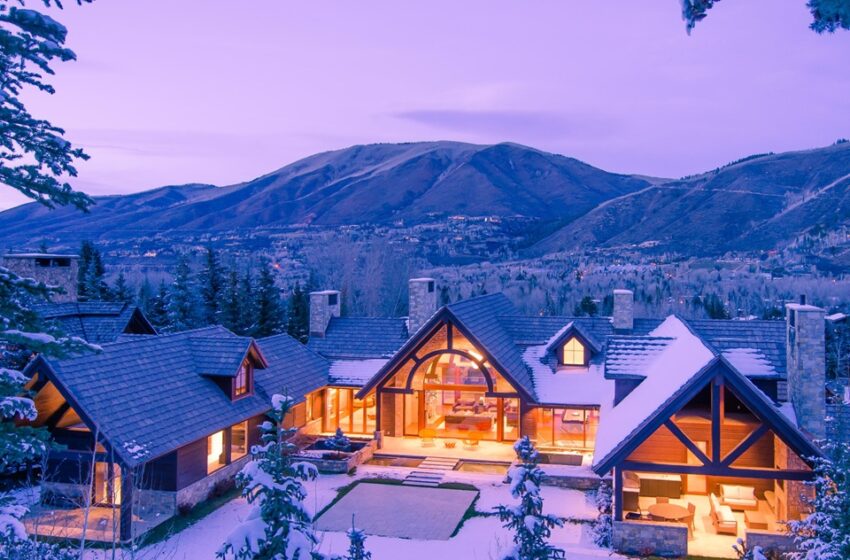From Peaks To Porch: A Guide To Purchasing A House With Breathtaking Mountain Views

Assessing The Benefits Of Mountain Living
Living in the mountains offers a unique and tranquil experience that’s hard to find elsewhere. Whether waking up to the serenity of misty mornings or enjoying the splendid sunsets, the benefits of mountain living can be transformative. Mountain living is not just a feast for the eyes; it can also enhance your well-being significantly by offering a peaceful environment away from the hustle and bustle of city life. If you’re interested in joining those who relish the pristine beauty of high altitudes, there are multiple Aspen homes for sale that can serve as perfect retreats for nature lovers.
Moreover, the clean, fresh air and proximity to nature cultivate a lifestyle of health and adventure. Activities like hiking, skiing, and climbing are right at your doorstep, instigating a dynamic yet restful way of life. The environmental and health benefits have been well-documented, proving that living amidst nature contributes to better physical and mental health. According to National Geographic, mountain living helps lower stress levels and improve overall happiness, offering a tranquil retreat from the hassles of urban living.
Choosing The Right Location
Your experience of mountain living will significantly depend on the location you choose. Proximity to essential amenities such as shopping centers, hospitals, and schools can greatly impact daily life, especially if you plan to live in the mountains long-term or raise a family. Climate is another crucial factor; different altitudes bring diverse weather conditions, impacting your comfort, accessibility, and lifestyle choices. Furthermore, ensure that the views truly resonate with your idea of tranquility, whether you prefer the majestic range of the Rockies or the rolling hills of the Appalachians. Researching and visiting potential areas can help ensure the location aligns with your lifestyle and personal preferences.
Understanding The Market
The real estate dynamics in mountain regions are fascinating and distinct from other markets. High demand for homes with stunning views is continually rising. Still, supply can be limited due to geographical constraints and environmental regulations. Delving deep into market trends and analyses can provide insights into pricing shifts, potential for appreciation, and the availability of properties. This understanding positions you to negotiate better prices and identify lucrative investment opportunities. Keeping a pulse on real estate trends and engaging with experienced local agents can also give you a competitive edge when purchasing.
Considerations For Sustainability
Preserving the natural beauty that attracts you to the mountains requires sustainable building practices. Opt for eco-friendly materials such as recycled steel or bamboo and energy-efficient designs, including solar panels and green roofs. Not only do they reduce your carbon footprint, but they also blend seamlessly into the rugged landscape, maintaining the aesthetic harmony of your surroundings. Resource-efficient homes ensure that your mountain sanctuary remains environmentally sound and harmonious with nature. Sustainable designs can also reduce long-term living costs, as eco-friendly technologies often lower utility expenses.
Legal & Financial Aspects
Navigating the legalities surrounding mountain property purchases is essential for protecting your investment. Zoning laws in mountainous agricultural or forest regions can affect how you utilize your property. Also, environmental regulations might have specific stipulations, so consulting a legal expert is advisable. Financially, be prepared for potentially higher insurance rates due to risks unique to mountain areas, such as landslides or snow damage. Proper financial planning, including securing mortgage pre-approval and budgeting for maintenance in less accessible areas, is crucial to ensure a smooth purchasing process.
Designing Your Dream Home
Mountain terrains offer unique design opportunities to adapt and capitalize on the beautiful landscapes. Consider utilizing large windows and open spaces to bring the panoramic views indoors and integrate the indoor and outdoor environments. Utilize rustic and natural materials like stone and wood to complement the organic surroundings. The architectural design should not only suit your aesthetic preferences but also the environmental characteristics of the location. Incorporating energy-efficient features and sustainable materials can make your home both a luxurious and environmentally conscious choice.
Creating A Mountain-Friendly Landscape
A significant aspect of owning a mountain home is designing landscaping that cooperates with the environment. Select indigenous plant species that conserve water and support local wildlife, reducing the intrusion into natural habitats. This approach not only maintains ecological balance but enhances the charm and sustainability of your surroundings. Utilize terraces and rock gardens to manage elevation changes and prevent soil erosion. Designing the landscape to be as maintenance-free as possible can also help adapt to the challenges posed by the mountain environment.
Embracing The Mountain Lifestyle
Living in the mountains isn’t just about the location—it’s a lifestyle choice that embraces simplicity and nature. The slower pace provides opportunities for deeper connections, whether with nature or within tight-knit local communities. Participate in local events, buy from farmers’ markets, and engage in outdoor activities like hiking or skiing. This lifestyle is enriching due to its proximity to the great outdoors. It fosters a sense of community that is both rewarding and fulfilling. Embracing this way of life means welcoming the tranquility and adventure that come with it, creating lasting memories and a harmonious balance with nature.